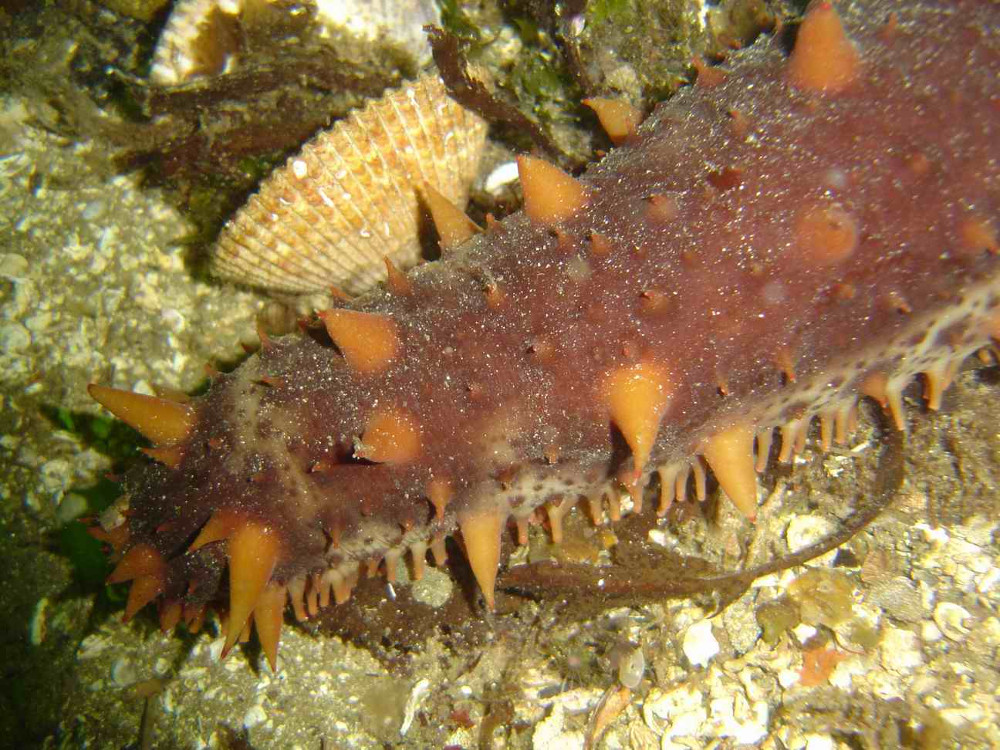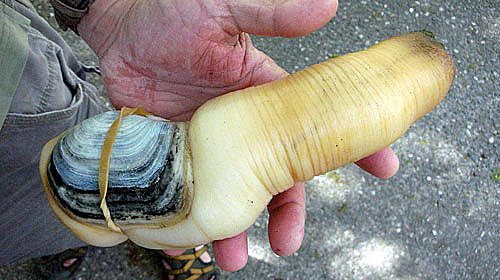
One commercial dive fishery in Southeast Alaska is off to a strong start this fall, while another struggles with heightened challenges from ocean conditions and its main market.
The seasons for sea cucumbers and geoduck clams opened in early October. Both are prized seafood delicacies harvested by divers from the ocean floor.
Cucumbers are bottom dwelling creatures that resemble their vegetable namesake and are sold on a mix of Asian and domestic markets. The guideline harvest level for cukes this year is one point nine (1.9) million pounds, up from last year and the second highest in the past three decades of the fishery.
Phil Doherty is co-executive director of the Southeast Alaska Regional Dive Fisheries Association (SARDFA), an industry group based in Ketchikan. He explained that a disease decimating sea stars up and down the coast has impacted a predator of sea cucumbers.
“That has allowed the things that they eat like sea cucumbers to have kind of a resurgence in population,” Doherty said. “So that’s why we’re seeing large numbers of sea cucumbers around because we’ve lost a major predator of them. On the down side of that a little bit it that they’re on, the sea cucumbers are a little bit on the small side. We’re dealing with an immature population that’s started to blossom here about 3-4 years ago. The cukes are a little bit smaller than what the market would like but there’s a lot of them.”
With more cucumbers, industry interest has increased. There are around 200 divers fishing this year, up from the typical 170. Doherty said the fishery was worth around 11 or 12 million dollars last year. Diving for cukes can be finished up by late November or early December. By the third week in October, the catch total had already topped half a million pounds.

Meanwhile, the dive fishery for geoduck clams has a lower guideline harvest level this year. The large clams are plucked from the ocean floor and shipped whole and live to overseas markets, if the clams don’t test too high for Paralytic Shellfish Poison or inorganic arsenic. There was some diving in early October. But PSP levels tested too high and the fishery stayed closed in the middle of the month.
Doherty explained that in the past 75 percent of areas would pass PSP sampling. He said lately it’s more like 25 percent of areas that pass and some that don’t open all season.
“There are some areas as I said over the past 2 or 3 years that we’ve harvested all through the wintertime and into late spring and we cannot get them to pass PSP testing,” Doherty said. “There’s something happening here over the past four years, five years, but really four years, that has really affected our PSP levels in Southeast Alaska. I don’t want to hazard a guess on that but it’s pretty obvious.”
Besides ocean conditions, market conditions may also be driving down the price for clams. Doherty said clams from Alaska and other parts of the Pacific coast are flown live to Hong Kong for distribution to mainland China.
“Of course there’s been a lot of political activity over there and the airport’s been closed down every once in a while and so, yeah the political upheaval in Hong Kong and the tariffs imposed by the United States on China goods and the tariff imposed by China on U.S. goods has definitely dropped the price down, especially for geoducks,” he said.
The geoduck price last year averaged around five dollars a pound but Doherty expects it could be lower this year. That fishery can run through the winter and into the spring, depending on ocean conditions and fishing time.











